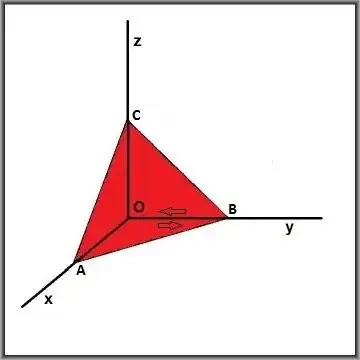By calculating the circulation per area of a vector field
$$F(x,y,z) = F_x(x,y,z)\vec{x} + F_y(x,y,z)\vec{y} + F_z(x,y,z)\vec{z}$$
in a small rectangle around $(x_0, y_0, z_0)$ on the $xy$ plane, it can be shown the limit as the sides of the rectangle approach zero is
$$\left(\frac{\partial F_y(x_0, y_0, z_0)}{\partial x} - \frac{\partial F_x(x_0, y_0, z_0)}{\partial y}\right)$$
The same calculation however is not that straightforward if the rectangle does not lie in the $xy$, $yz$, or $xz$ planes. Now if $\vec{n}$ is the normal of the plane, I thought that by performing a change of basis such that $\vec{n} \rightarrow \vec{z'} $ and by following the previous calculations we could show that the limit of the circulation per area is
$$ \left(\frac{\partial F_{y'}(x'_0, y'_0, z'_0)}{\partial x'} - \frac{\partial F_{x'}(x_0, y_0, z_0)}{\partial y'}\right) $$
This is also the inner product of the curl of the vector field and the normal $\vec{n}$
As such the two should be equal:
$$\left(\frac{\partial F_{y'}(x'_0, y'_0, z'_0)}{\partial x'} - \frac{\partial F_{x'}(x'_0, y'_0, z'_0)}{\partial y'}\right) = \\ \left[\left(\frac{\partial F_z(x_0, y_0, z_0)}{\partial y} - \frac{\partial F_y(x_0, y_0, z_0)}{\partial z} \right)\vec{x} + \left(\frac{\partial F_z(x_0, y_0, z_0)}{\partial x} - \frac{\partial F_x(x_0, y_0, z_0)}{\partial z} \right)\vec{y} + \left(\frac{\partial F_y(x_0, y_0, z_0)}{\partial x} - \frac{\partial F_x(x_0, y_0, z_0)}{\partial y} \right)\vec{z}\right] \cdot \vec{n} $$ I've been trying to prove the above equality for some time without success, specifically I am not sure how to handle the transformations correctly. Any help with this is much appreciated!
